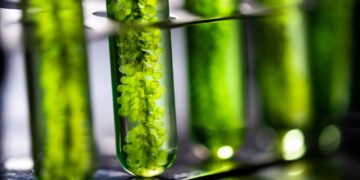When we look at the history of humanity on this planet, we can see the multiple ways in which man and nature collaborated and lived together in harmony. This used to happen through various means, whether it was giving back to the natural environment or by actively taking care of it. However, this equilibrium has lost its balance over the last couple of centuries as humanity moved away from nature. We no longer consider the environment as something we need to collaborate with but something that exists for our benefit, something that we can control and use in whatever way we want. Over the past few decades, we can see how that kind of thinking has impacted the natural world with increased droughts, heat waves, massive storms, and harsher winters.
But what does that have to do with hemp, you might ask yourself? Well, it’s simple, really. While hemp is severely misunderstood, it was, in fact, one of the first plants that humans domesticated, grew, and used in their everyday lives, hemp agriculture dating as far back as the year 8,000 BC. And no, it didn’t have anything to do with getting high because hemp doesn’t have those properties. Hemp was used for making clothing, paper, pottery, and food. The first traces of hemp used by humans were found in Asia, followed by Europe, Africa, and South America. It was only introduced in North America in 1606, but since then, it has been used for various products.
In this article, we’ll try to cover the misconceptions related to hemp, the fantastic properties that make it the most versatile resource on the planet, and how it has been used and can be used in the future, not only for our benefit but the planet’s as well. Let’s start with the basics and then go into the sections that make hemp the most sustainable resource available for a thriving and circular economy.
Article Summary:
- Why does Hemp have Such a Bad Reputation?
- What is Hemp?
- What Makes Hemp such a Great Plant?
- Hemp Agriculture
Why does Hemp have Such a Bad Reputation?

When you think about hemp, your mind might go to marijuana or weed, which would be 100% correct. The misconception is that hemp and marijuana are two different types of plants. The truth is that they are not, but they are part of the same family. The difference between the two comes from the chemical composition of THC and CBD. THC is responsible for the psychological effects of marijuana, while CBD has multiple medical uses. Both hemp and marijuana contain these chemicals but in different amounts.
While hemp, or industrial hemp, contains less than 0.3% of THC, the percentage of CBD is between 3.5% and 20%. Marijuana, on the other hand, has between 3% and 15% of THC and less than 0.15% CDB. While the THC chemical leads to a euphoric feeling, the amount contained in hemp is too low to have that effect. The CBD chemical, however, has been researched by many scientists and their discoveries show broad beneficial effects on the health of those consuming it. But that’s where the problems start. Because of the similarities between these two types of cannabis, many believe both are drugs, but that is false. Furthermore, the war on drugs affected how people looked at this type of cannabis because they made no clear distinction between the two strains. To this day, growing hemp is strictly regulated or even illegal in some states, regardless of the amount of THC found in the plant.
What is Hemp?

Hemp is a plant that can not get you high like its cousin, but that doesn’t make it any less interesting. In fact, the opposite is true as because marijuana gets you high, and that’s where people stop with its uses, that and medicine. Hemp, on the other hand, is a multipurpose plant; every bit of it is usable in various ways. Aside from the lack of psychoactive properties, hemp grows taller than marijuana; its leaves grow mostly at the top, making it possible to grow more on a smaller surface. It is much more adaptable and easier to grow, flourishing in most climates and under a wide range of conditions. To make matters even more appealing, it doesn’t require the intense care that its cousin needs, nor the sustained amount of heat, sun, water, and humidity.
In other words, hemp can grow pretty much anywhere on the planet, uses fewer resources than most plants, grows fast and easy, and from root to leaf, humans can use everything from hemp. All these distinguishing features influenced a hemp revival, and how people view hemp in the US is changing. The interest in this incredible plant came from politically influential groups, nutritionists, farmers, activists, green consumers, and entrepreneurs. Still, a change in federal policy is necessary to make it clear from a legal perspective that hemp is not the same as marijuana leading to specific requirements and procedures being enacted to make it easier to cultivate industrial hemp.
What Makes Hemp such a Great Plant?
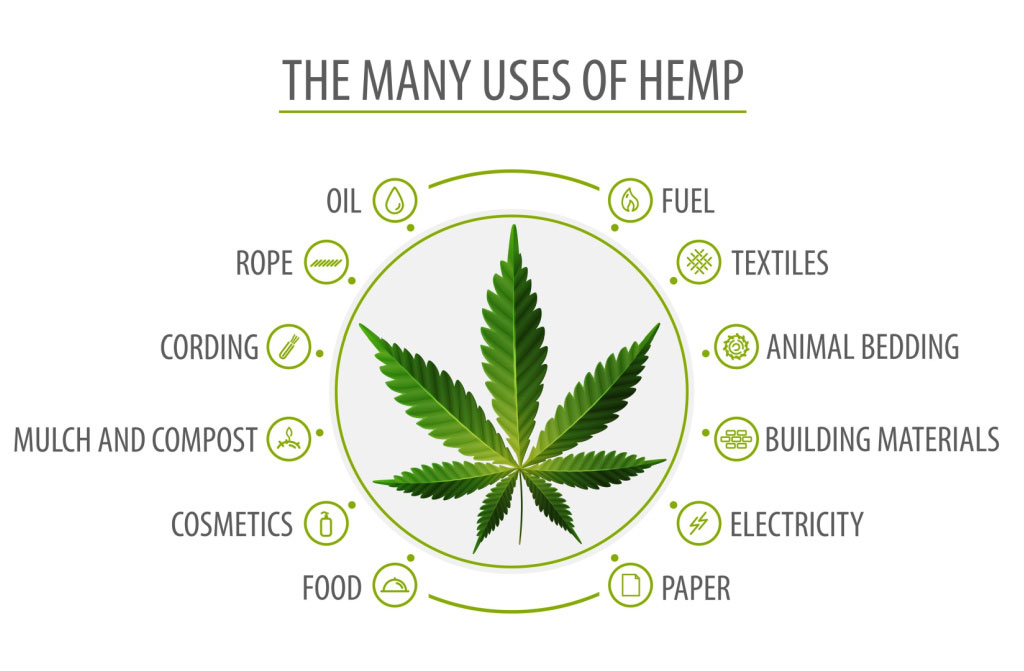
If you ever consider what makes one plant better than another in the face of the negative impact industrial agriculture has on the environment, we might jump to say that no one plant is great. Well, that’s not true because hemp is. Any type of crop impacts the soil in which it grows, and how it’s cultivated affects the soil composition. The worst part is that industrial agriculture leads to damaged soil and depleted nutrients, making it much more difficult for anything to grow on it, mainly because the same crops are planted yearly. So how is hemp different from any other crop? We’ll look at its wide variety of uses and then explain why it’s different from other crops.
Hemp for Food and Beverages
Several health benefits have been linked to the consumption of hemp. The most straightforward product from hemp in alimentation is oil that we can use for any food and in any recipe that needs oil. Hemp seeds can replace any type of nuts and can also be added to cake batter for extra nutrition.
Hemp has a high amount of amino and fatty acids, which are essential for a balanced diet. The leaves can be used for salads or blended into juice, while we can crush hemp seeds into powder to make flour or retrieve the oil from them. They can be converted into milk, eaten raw, or mixed into different recipes.
As hemp seeds have a high percentage of protein, we can use them to provide two-thirds of the daily protein requirement in 100 grams. They are also rich in magnesium, dietary fibers, vitamin B, and phosphorus. When it comes to beverages from hemp, you can make infused iced tea, brew hemp beer, ferment it into wine or distill it into a wide variety of other alcoholic beverages.
Hemp in Clothing

While on its own, hemp is relatively rough and rugged for our soft skin, the fabric has a resilience that exceeds any other natural fabric. Several cultures worldwide have used hemp for clothing for centuries, and the oldest fabric samples from hemp can be traced back to 8,000 BC. For instance, Eastern European cultures used hemp for their traditional clothing that can be worn even after two hundred years since they were made. However, modern fashion transformed the once rugged material into an alternative of varied roughness by combining hemp with silk for lingerie or using its incredible durability for jeans, shoes, or other clothing meant to be tough.
The most surprising thing about hemp fibers is that despite their resilience, toughness, and durability, they are one of the lightest fibers in the industry. Clothes made from hemp are breathable, lightweight yet resistant, and incredibly easy to maintain, clean, and use. That is why some of the biggest and most high-end labels out there use hemp for those properties. We’re talking about Armani, Calvin Klein, and Ralph Lauren. We could substantially reduce the fashion industry’s negative environmental impact by including more hemp in our clothing.
Paper
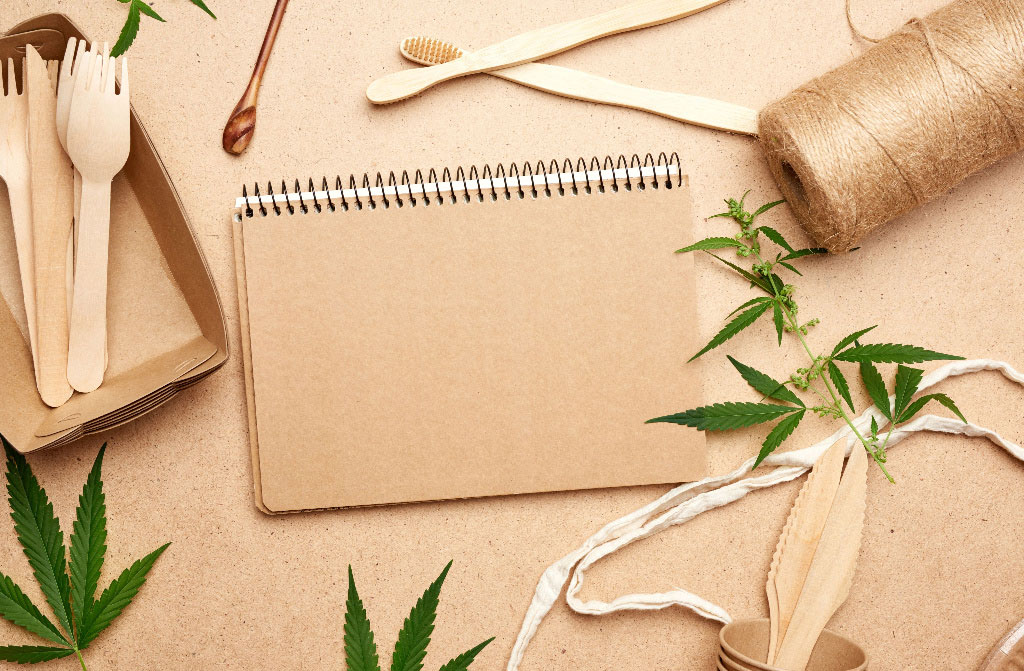
Along with clothing, one of the oldest uses for hemp has been paper. This is particularly disturbing if you consider how fast it grows and how easy it is to produce, but while there used to be hemp paper over two millennia ago, nowadays, only 0.05% of the paper globally is made out of hemp. We don’t need to cut down forests to make paper or books or use animal fat for our toilet paper. Hemp is a far more economical resource for paper production, and it helps to conserve trees, forests, and wildlife habitats.
With everything else happening in the world, climate change carrying a heaving punch, hemp agriculture could be a lifesaver. We haven’t even gotten to the more serious issues for which hemp provides a great alternative. We are halfway through, and the fact that we don’t grow hemp everywhere it can grow is baffling. While a tree that’s used to make paper takes up to 30 years to grow in order to reach net zero carbon emissions, hemp is fully grown between 3 to 6 months and can be replanted with no harm to the soil, but we’ll get back to the impact of hemp crops in a bit. Additionally, hemp doesn’t require the use of harsh chemicals to be transformed into paper like tree-based products do, making it an even more appealing alternative for paper.
Food & Bedding for our Pets

As we already covered the nutritional make-up of hemp and the reasons why it can substitute many of the products we already consume that have a much more significant impact on the environment, let’s also look into how we can pamper our pets with it. The impact hemp has on our hair through the vitamins and chemicals it contains also impacts our pets’ hair, making the cat’s coat shiny and healthy. Furthermore, it can also be used as a nutritional supplement for dogs, horses, and cows. In the same way that hemp can be used for textiles, it can be an excellent substitute for bedding for rodents and horses as a cover on top of hay or wood shavings.
Building Materials
Now we’re getting to the good part, not to say that the alternatives mentioned above aren’t good. Still, we all know that the construction industry significantly impacts on the environment. When you become aware that hemp can replace the following materials, you’ll start wishing your home was made out of hemp, considering how much it probably cost you to build it. So, drywall, plywood, conventional insulation, sealants, glues, and any decoration materials can be replaced by hemp alternatives. Once harvested, the hemp stalks are separated and go through a decoration process, leaving the fibers to be concentrated into a pulp. Now get ready for the next part.
The material resulting from that process is mixed with lime and water, and the material named hempcrete is created. This hempcrete is 100% eco-friendly, 100% biodegradable, and much lighter but stronger than concrete. It is also mold, fire, and pest resistant. If legislation heads in the right direction concerning hemp, this material could become a primary choice for builders, along with other sustainable building practices. Coupled with the other hemp alternatives like plywood and drywall, hopefully, we’ll be able to have 100% hemp building in the following years. As a whole, a home made out of hemp will provide much better insulation for warm and comfy homes while also ensuring that you won’t be bothered by whatever your neighbors are doing, or you’ll be able to have all the privacy without worrying that you’ll disturb other inhabitants in your home.
Plastic

Like many other man-made materials, plastic proved to be incredibly harmful to our environment, and if production isn’t stopped soon, we will drown our oceans in plastic in no time. There is literally no reason why we still need to create plastic, especially seeing as we can use hemp to make as much BIOplastic as we could possibly need, and this type of plastic won’t harm any fish or other marine creatures or the health of every other living being on the planet. It doesn’t even matter what type of plastic you need, as any type of plastic can be replaced by hemp. It also doesn’t matter what you want to make out of plastic because you will be able to make it out of hemp without harming the planet.
Did you know that conventional plastic can take years, or even thousands of years, to degrade, and even then, it’s not gone, it just becomes microplastic that ends up in fish, on our plates, and then in our bloodstreams? Well, hemp plastic is completely biodegradable like any other plant and it won’t overflow our landfills or create islands in the middle of the ocean that are bigger than countries.
By replacing conventional plastics with biodegradable plastics, we can reduce our CO2 emissions significantly and maintain our lifestyle without destroying our planet. Hemp plastic is made from the plant’s stalk, and anything from bottles, knives, spoons, forks, bowls, straws, bags and coffee cups can be hemp made. However, seeing as we live in a world controlled by the petroleum industry and everyone who wants to make toxic money without worrying about the impact they are having is investing heavily in this industry, hemp plastic isn’t produced on a large scale due to lack of investments. But despite all the greed that exists on the planet, there are still initiatives that develop hemp plastic while they battle the mammoths of the petroleum industry, showing us a bright light at the end of this oil-coated tunnel.
Fuel

The cause of many global environmental problems has met its match in this incredibly easy-to-grow plant. Yes, there are ways to make fuel out of hemp because, just like any vegetable oil, hemp oil can also be processed into bioethanol and biodiesel. Biodiesel is made from hemp seeds and can extend a diesel engine’s life as its lubrication properties are far better than that of petroleum fuel. Bioethanol is made from the rest of the plant with a wide variety of uses. Together, they give us the best alternative to the current dependence on fossil fuels that destroy the planet and the life of everyone living on it, except for the few “lucky” fossil fuel investors with no morals.
As an added benefit, hemp-based fuel emits fewer ozone-damaging toxins into the atmosphere, making it an even more appealing alternative. Fuel extracted from hemp is also without sulfur or other heavy metals. Hemp fuel is considered one of the (if not the only) cleanest biomass fuels as it causes minimal air pollution even when compared to other forms of biofuel. Burning hemp emits limited amounts of CO2, and universal use would minimize the greenhouse effect, acid rain, or other occurrences linked to fuel consumption.
Cosmetic Products

The whole cosmetic industry is going through a make-over with more and more products that contain harmful chemicals getting exposed on social media platforms and a growing desire from consumers to use natural alternatives. The increasing awareness of the harmful effects of chemically packed products may start from something as simple as a reaction one has to a product that then leads them towards natural alternatives. For me, it was the fact that no chemically packed face cream could make my acne go away, no matter how expensive they were. Since then, I have chosen natural products with far better results and cheaper prices. It’s not uncommon for hemp to be used as an ingredient in many soaps and lotions, especially considering its incredible benefits for the skin.
The oil from hemp seeds ensures moisture retention in the skin, improves elasticity, works wonders on wrinkles, alleviates dermatitis and dryness and does not clog up the pores in the skin. The use of hemp oil cleanser clears the skin of excess oil as it removes any dirt or pollution from the skin, leaving behind a glowing and healthy look. The same cleansing properties make hemp oil ideal for natural laundry dry soaps as it makes sure to take out any grime in a delicate way that leaves the fibers unaffected and prologues the life of your favorite clothing.
Chemical Cleanup

After the section above, this part may seem fishy or farfetched, but it’s still cleaning, and you can look it up easily on any search engine simply by typing “hemp Chernobyl” in your search bar. Otherwise, would you be able to believe that hemp was used to decontaminate soil in Chornobyl with fantastic success in the late ‘90s? Despite my immense appreciation for this plant, I still had to double-check to make sure it wasn’t some made-up story from someone that tried hemp’s cousin a bit too much.
But yes, hemp was tested on the contaminated soil at the Chernobyl nuclear disaster site. Because of its fast growth rate, the plant managed to clean land that was contaminated with sewage sludge, heavy metals, and fly ash. While the studies are still in their infancy, considering the level of contamination present at the site, this simple plant managed what no other decontamination method did. It decreased lead, nickel, and cadmium levels by extracting them from the soil. The plant’s positive results are still being studied worldwide, in Italy and at the Colorado State University, where there are looking mainly at selenium and hemp’s ability to remove the pollutant from the soil.
Supercapacitors

Researchers have been trying to figure out a way to store energy in a much cleaner and more efficient manner so that we can, for instance, create eco-friendly planes, as the current batteries weigh far too much for a plane. These so-called supercapacitors are made from graphene nanosheets but are too expensive to be a viable alternative for the market. But hemp comes in to save the day in this case as well. In 2014, a scientist from Canada discovered a way in which those expensive nanosheets can be made out of hemp fibers. This would significantly lower their cost and increase the chance that these supercapacitors will one day become viable and commercially sound alternatives for batteries used in every electronic or vehicle we use daily.
CBD Oil
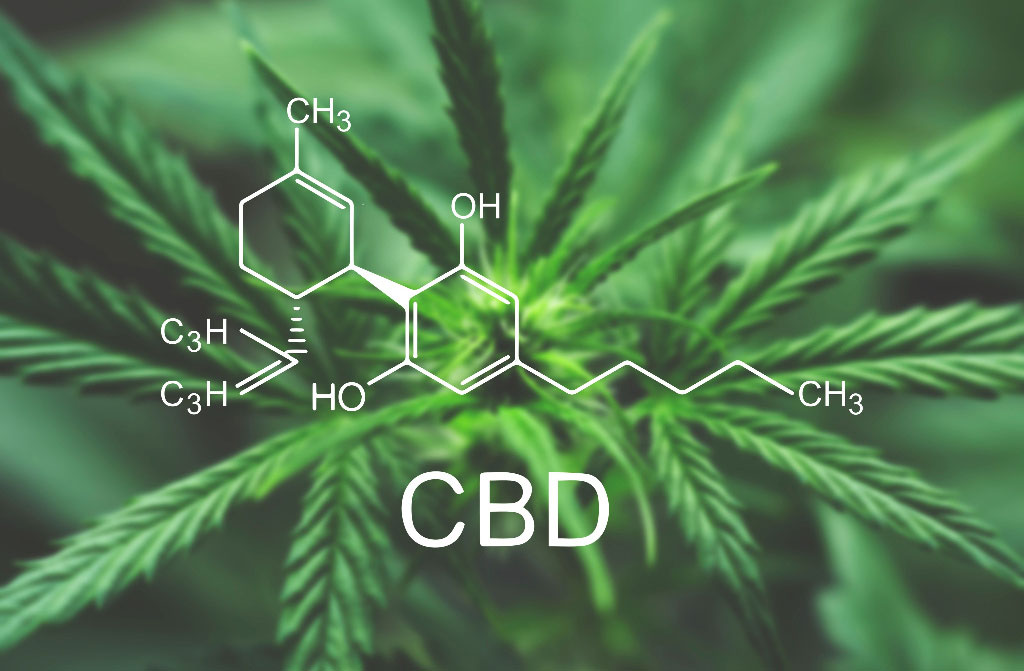
As we already explained, CBD is a chemical component that is present in large amounts in hemp, making the plant ideal for CBD extraction. Also known as Cannabidiol, this chemical compound is a popular remedy for various medical issues. CBD is not psychoactive, and it does not make you high, but what it does is the reason why hemp is considered by many a miraculous plant.
For those experiencing pain, CBD is an appealing option as it does not have the side effects of other pharmaceutical drugs and does not create addiction. But besides alleviating pain, CBD is documented to ease anxiety symptoms, but how does it work?
For those of you unaware, the human body is a complex machinery that responds to various medical stimuli through nerve systems that are in charge of multiple functions in the body. One of these systems is the endocannabinoid system. I bet that may look familiar from other words we covered in this article already. The endocannabinoid system regulates various functions, including appetite, sleep, pain sensation, and our immune system’s response. So far, it sounds promising, am I right?
Furthermore, our body naturally produces endocannabinoids, also known as the neurotransmitters that connect to cannabinoid receptors in our bodies. Research has shown that if we expose the endocannabinoid system to CBD, the endocannabinoid receptors will be activated, reducing inflammation and interacting with neurotransmitters. While research is still young, some signs show an increased response from the immune system when CBD is introduced, meaning that our body will be able to heal itself with the help of CBD simply because the endocannabinoid system responds to it.
Further research shows that CBD can be used for rheumatism, fibromyalgia, arthritis, mental disorders, and their side effects, PTSD, depression, anxiety, epilepsy, Parkinson’s, high blood pressure and heart-related conditions, schizophrenia, addiction, cancer symptoms, glioblastoma, and others. The way in which this chemical compound, easily extractable from hemp, can help treat so many medical conditions that we would otherwise treat with drugs that may cause addiction and have severe side effects may be hard to wrap your head around. You might wonder why this isn’t more researched or readily available, but just think of the fact that if it wouldn’t be so regulated, you could grow it in a pot at home, and you’ll understand why modern medicine is so behind on using this one plant. When the interest of the few trumps the need of the many, profits can be made with ease, especially if you make the resources scarce and difficult to purchase.
Some side effects linked to CBD oil are changes in appetite and weight, fatigue, diarrhea, drowsiness, pneumonia, and sedation. Still, it’s important to note that these side effects can result from the way CBD reacts to other medications. So above all else, if you are interested in following a course of treatment based on CBD oil, do not take it over the counter and always talk to a medical professional. Seizure medications, diabetes medication, antidepressants, and other drugs can interact with CBD and cause harm to the human body. Also, before you purchase any CBD products, make sure they are of good quality and that you administer the correct dosage for your needs.
Hemp Agriculture
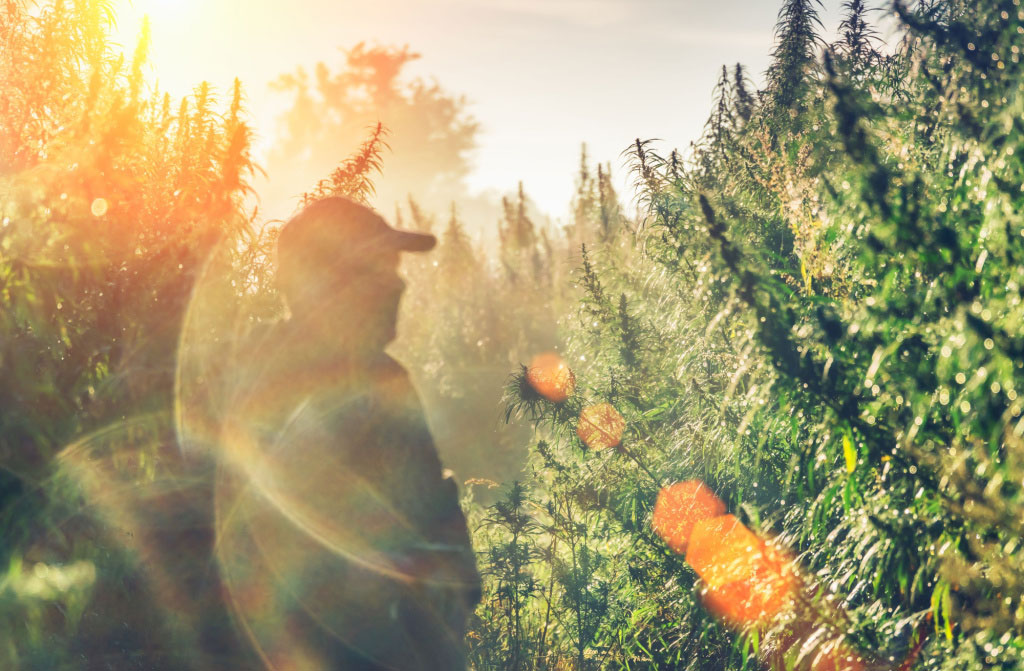
We already mentioned that hemp could grow virtually anywhere in the world due to its incredible adaptability and limited care necessities, unlike its controversial cousin. There are over 100 types of hemp to choose from that have different characteristics and can be grown for the uses listed above. From high oil content to lengthy fibers and everything in between, the one most fitted for a particular use can be chosen and grown in a matter of months.
Because hemp is a plant that grows fast, it manages to get rid of weeds on its own, literally choking everything else around it and making it impossible for anything to disturb its growth. That also covers pests because it has a high resistance to anything that may want to harm it. However, it can be grown along with other legume plants as it grows in 3 to 6 months without harming other plants. As it is researched for its ability to cleanse the soil, we can cycle it after other crops to restore balance to the soil, increasing soil fertility and production—ideal for permaculture or other sustainable agricultural practices.
An added benefit to hemp agriculture is that while corn is only used for food, cotton for clothing, wheat, and rice also have one utility, but we keep planting them regardless of their impact on the soil, hemp has so many uses that this article turned out a lot longer than was meant to be. While corn drains the soil of nutrients, cotton uses too much water, and both need strong fertilizers to protect the crops from pests. Hemp, to thrive, requires little to no fertilizer and no pesticides whatsoever. This makes crops more environmentally friendly than others and also reduces the cost that would usually come from pesticides or fertilizers.
Conclusion
I see no reason why anyone should still wonder whether hemp is a profitable, environmentally friendly, and sustainable resource considering everything that was covered in this article and the many other information that can be found about this miraculous plant online and offline. This year, modern agricultural practices made it clear that things need to change if we are to continue to produce food for the world’s population equitably. The current system shows signs of tiredness, and the soil needs to be protected for future generations. With such a large ecosystem so easily affected, we need to diversify and improve our agricultural practices, and hemp can help us do just that. The best part about it is that it can not be limited to only a few producers. Once it is liberated from restrictive legislation, any farmer can grow it and sustain their family and community. It won’t only be available for the few, and its uses are as variable as petroleum, if not more.
This is a plant that won’t only release us from the chokehold of the fossil fuel industry, but it will also create a more balanced economy, with rich and poor alike able to grow it and make a profit from it. Just imagine … one plant that can feed us, clothe us, shelter us, and fuel our vehicles while also keeping us healthy. It seems hard to be true, but it is, and it’s been used for millennias by many civilizations before us. Why should we not benefit from it, considering how incredibly versatile it is?
As unbelievable as it may seem, everything in this article is true. If there is anything that you would want to verify, go ahead and search for it. However, if you want to know more or like to share something related to hemp, feel free to do so in the comments section below. Like & Share this article with friends and family to raise awareness about this plant’s incredible abilities, clear the air, and correct any misinformation being spread about it. Society clearly got it wrong with this one, and we should make amends.






